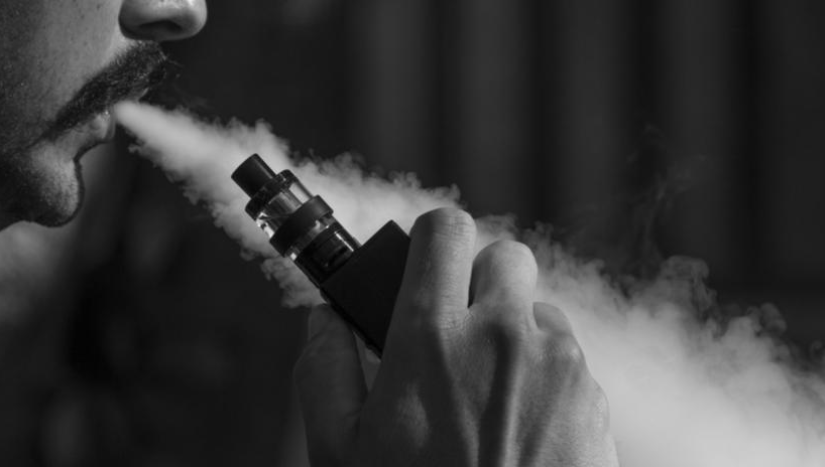Youth Vaping: De-Glamorizing Vaping through Social Media and Influencers

Before the health risks of smoking were established, it was seen as a harmless and glamorous vice. We bought the lie sold to us by the Marlborough Man and those fresh-faced Alpine women. Then came the research, the evidence and the whistle-blowers, followed by legislation, regulation, education and year upon year of high-profile public health campaigns — I still remember the tar being squeezed out of that sponge. We know the steps to take, so why aren’t they being taken?
The Growing Problem of Youth Vaping
Statistics are mounting that prove that vapes are a future public health liability. A recent survey conducted by the George Institute for Global Health found 35 per cent of Australian primary school teachers reported some of their students were using vapes. More than one-quarter of this group said the problem had worsened in the past two years.
Youth vaping rates have tripled in the past three years with 14 per cent of 15-30-year-olds being current vape users and 33 per cent having tried vapes in the past. As we know, apart from containing a host of chemicals often found in cleaning products, many of these vaping liquids illegally contain nicotine, failing to declare this on the package.
There is an often-repeated fact in this debate that makes me very scared for the very young person picking up that vape — the nicotine in one vape can equal 50 cigarettes and there is evidence that one in three people who vape progress to smoking.
The Need to De-Glamorise Vaping
How have we let this happen? Part of me wants to blame Covid for the way vaping appears to have snuck under our radar. We’ve been paying attention to more pressing matters. So, what now?
The research on vaping is building, but we cannot yet say definitively whether it is linked to cancer or heart disease or lung disease. We need to invest more time and effort into uncovering what price the young vapers of today will be paying in the future.
When it comes to legislation, legislators are trying to keep up. As it is, the Therapeutic Goods Administration has made recent recommendations to further regulate vape products. I believe banning those dessert-flavoured vape products would go a long way to reducing the appeal, and let’s get more boots on the ground to check up on retailers selling vapes under the counter.
But what about trying to get young people to understand that they are being sold the modern-day Marlboro Man lie?
Using Social Media to Combat Vaping
A 2019 study by the Centre for Disease Control and Prevention linked daily use of social media platforms, such as Instagram, to experimental and current vaping among teenagers. While it’s great to educate young people and talk about the facts of vaping, we also need to chip away at the aura of glamour surrounding vaping.
We need powerful images that will stand up against the likes of Cara Delevingne and Snoop Dogg casually vaping on a red carpet. The current campaign running in the US — The Real Cost of E-Cigarettes — does well to counter the glamour. Their latest ad shows a young girl reaching into a toilet to retrieve her fallen vape, and then puffing on it because she is so desperate for a hit. It’s anything but pretty.
In the US, one anti-vaping group has tried to harness the power of influencers, paying a group of six young TikTok influencers to quit vaping and document their journey. One of those influencers alone had 6 million followers. It’s time we started finding some Australian influencers to do the same.
We need to take the shine off these products, remove the “vape screen” and show them for the damaging poisons that they are — before yet another generation’s health goes up in vapor.
Conclusion
Youth vaping is a growing public health concern, and we need to take action to address it. Legislation and regulation are important, but we also need to de-glamorize vaping and change the way young people perceive these products.
Social media is a powerful tool that can be used to combat vaping, but we need to use it strategically. By harnessing the power of influencers and creating powerful anti-vaping campaigns, we can begin to shift the narrative around vaping and protect the health of our youth.
FAQs
- What is vaping? Vaping is the act of inhaling and exhaling aerosol, often referred to as vapor, which is produced by an e-cigarette or similar device.
- Why is vaping harmful? Vaping can be harmful because many vaping liquids contain chemicals that are harmful when inhaled, and many also contain nicotine, which is highly addictive.
- What are the health risks of vaping? The long-term health risks of vaping are not yet fully understood, but there is evidence that vaping can lead to lung damage, heart disease, and other health problems.
- Can vaping lead to smoking? There is evidence that suggests that people who vape are more likely to start smoking traditional cigarettes.
- What can we do to combat youth vaping? We can combat youth vaping by enacting legislation and regulation, investing in research to better understand the risks of vaping, and de-glamorizing vaping through social media campaigns and other initiatives.